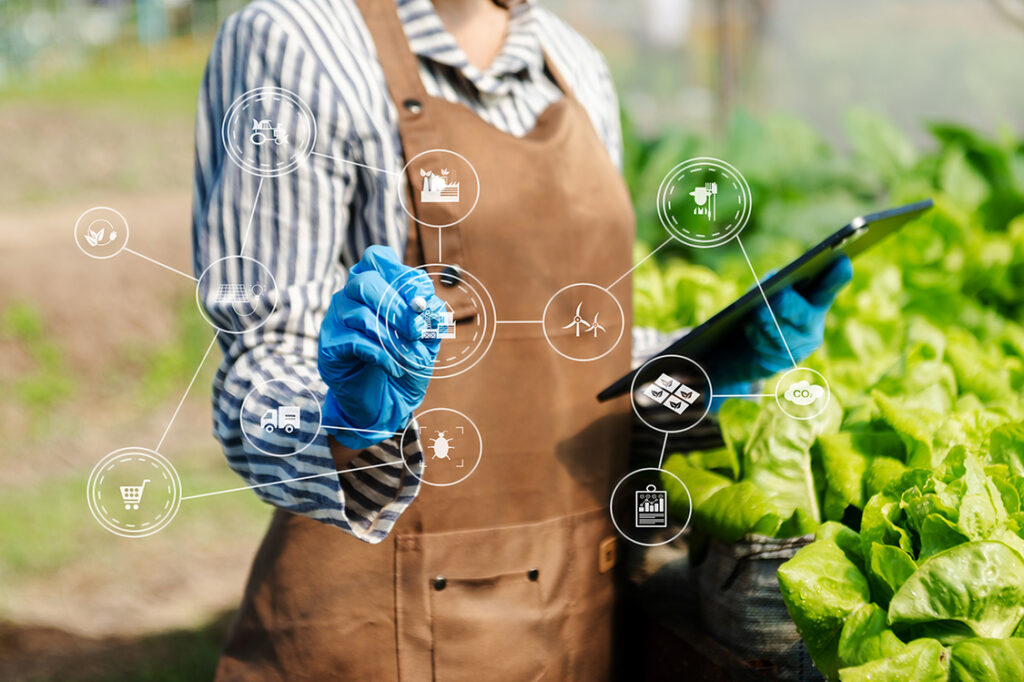Steps to ensure your business is serving sustainably
By Joy Pouros, Culinary Software Services

Embracing sustainability in the foodservice industry isn’t just a trend; it’s a fundamental shift that encompasses many aspects of your day-to-day operations. If that sounds intimidating or off-putting, it shouldn’t. Many sustainable practices are also just good business, lowering operating costs and adhering to industry best practices.
Let’s dive into the top opportunities for sustainable improvements within restaurants and other foodservice businesses.
Sustainable Menus
Sustainability begins with the menu. Broadly speaking, serving in-season foods sourced as locally as possible is most sustainable.
To achieve this goal, restaurateurs can partner with local farms and can change their menus to reflect the season. That doesn’t need to mean an entire menu change. Even keeping your staples and having seasonal limited-time specials or sides can work.
Offering more plant-based dishes is also more eco-friendly. Livestock requires substantial resources to raise for consumption. In addition, they contribute to water pollution and produce methane, nitrous oxide and carbon dioxide. Plant-based entrees are becoming more popular with consumers for their health benefits and environmental sustainability. Diversifying your menu not only helps the environment but also aligns with consumer preferences.

Food Waste Reduction
Restaurants everywhere struggle with waste—which is bad for the budget and for the environment. And it adds up; the United States throws away 120 billion pounds of food a year, and about 40% of that waste comes from restaurants, grocery stores and other foodservice companies.
The first step in reducing waste is to conduct an audit of all waste produced by your foodservice business. Track everything that gets thrown away. Even if you only do this for a week, you’ll have a better understanding of where the issues lie.
Waste reduction begins before the food even makes it to the kitchen. Using inventory management software can prevent over-ordering, as can calculating and monitoring your Inventory Days on Hand (DOH). Basic inventory best practices, like FIFO (first in, first out) and proper food storage, also prevent food from going bad before it makes it to the table.
By designing your daily specials around what you need to move in the kitchen, you’ll be able to use excess ingredients before they go bad. If you are consistently unable to have what you need while also not wasting food, you may need to consolidate your menu so there are fewer unique ingredients that are exclusively used for a small number of dishes. Finally, if the waste is in the form of uneaten food on patrons’ plates, you should rethink your portions.
Of course, some food waste is inevitable. The next step in sustainability is how you handle it.
By partnering with community organizations, foodservice companies can find ways to donate food that is at risk of being tossed but is still safe to eat. The Food Rescue Locator (foodrescuelocator.com), for example, has a directory of organizations that “rescue” food and distribute it to people in need. Too Good to Go (toogoodtogo.com) is an app that connects people with restaurants that have surplus. Individuals can then purchase surprise bags of food for a discounted price, thus achieving reduced waste and a little revenue.
For food no longer safe to eat, composting keeps it out of landfills. Some community gardens will be happy to take your compost. Just make sure you check your local regulations before getting started.

Takeout Packaging
Packaging is a large source of waste, particularly if you have a robust takeout or delivery operation. Don’t forget that even if it doesn’t get thrown away on your premises, it’s still waste. For this reason, don’t include cutlery or napkins unless they are requested. After all, most delivery is going to someone’s home, where they likely have their own napkins and silverware.
Determining the best packaging material is complicated. There are a few things to consider when comparing packaging options: material, reusability and disposability.
1. Material
Styrofoam is one of the worst materials to use for packaging. It’s not reused by consumers, it isn’t biodegradable, and it’s a hazard to wildlife. But what packaging is the best: paper or plastic? Paper is often considered preferable to plastic, but there are other considerations.
Paper requires less energy to manufacture, is a more natural material that decomposes faster, and is recyclable. However, if it has a wax or plastic lining, which is often used in food packaging, it cannot be recycled.
Furthermore, some food packaging may contain PFAS (per- and polyfluoroalkyl substances), which are “forever chemicals” that don’t break down. These chemicals are bad for the environment and for people, and they can leach into food. Regardless of what material you choose, try to avoid packaging containing PFAS.
2. Reusability
While paper is better as a one-time-use material, the math changes when you account for reusability. Many plastic containers are reused by consumers, especially if they are easy to wash and can be microwaved. It’s best if these containers are labeled with those features, otherwise consumers may accidentally warp and ruin them upon their first reuse. Then, despite everyone’s good intentions, they’ll end up in the landfill anyway.
There are some organizations that facilitate the return of reusable takeout containers that can be reused up to 1,000 times. Their availability may be dependent on your location, but it’s another possibility that’s likely to grow with time.
3. Correct Disposal
Many food containers are only recyclable if cleaned properly, which most consumers fail to do. This contamination can cause loads of recycling to be incinerated or sent to the landfill, negating the use of a recyclable material. Loose plastic bags, even if recyclable, can wrap around and clog equipment, causing machine damage.
The numbering system of plastic types for recycling may not be well understood by consumers, who may throw it in the trash if they are unsure if it can be recycled. Furthermore, different municipalities have different capabilities. Some “green” containers need special processing that’s not widely available. That causes more of these containers to wind up in landfills, where they can actually produce more methane than their regular plastic counterparts due to the plant material they are made of. Know your local capabilities, and make it clear to consumers what is recyclable.
Mindful choices in takeout packaging minimize environmental impact, but regardless of what you choose, it’s helpful to communicate properly with consumers to maximize the chance that the packaging is reused, returned or recycled as intended.
Fiscal Sustainability
Even the best-intentioned restaurant owners must grapple with financial viability. How does all of this fit into profitability? The truth is sustainability can decrease operating costs by 20% to 30%. Let’s break that down.
Reduction of food waste is a simple financial win. The restaurant industry spends an estimated $162 billion every year in costs related to wasted food. There’s no downside to reducing food waste—the time invested in creating better processes will yield real cost savings.
Likewise, efficient cooking and cleaning methods can save energy and water without a financial investment. Proper cleaning and maintenance can also increase the efficiency of your existing appliances.
Energy-efficient appliances, including toilets and sinks that operate using less water, save money in operating costs but require an upfront investment. There are federal, state and local incentives on some of these improvements. Between the incentives and the savings in operations costs, some improvements pay for themselves more quickly than you think.
Sustainability: A Winning Strategy
While adopting sustainable practices requires a multifaceted approach, that approach can be incremental. Some changes require more work or upfront investment than others, but even small changes can increase your sustainability, and you can work your way up to larger endeavors. By integrating these practices, restaurants and other foodservice businesses can play a vital role in promoting a more sustainable and responsible future.
ABOUT THE AUTHOR

Joy Pouros works as the authority writer in the training department at Culinary Software Services, where she writes on topics as diverse as human resource issues and increasing profits. Joy entered the industry working as a nutritional aide in the Chicagoland area before moving into writing and consulting.
For more information, visit cheftec.com.










